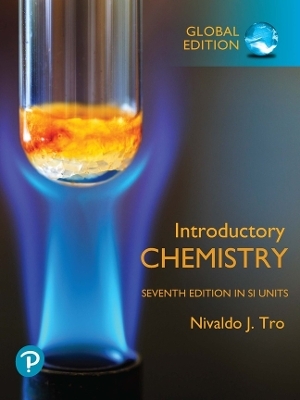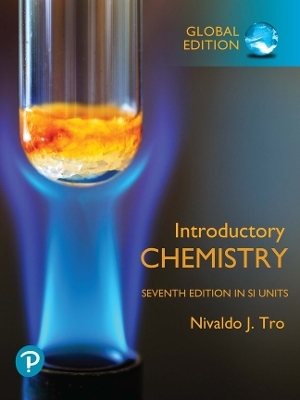
Stress Corrosion Cracking of Pipelines
John Wiley & Sons Inc (Hersteller)
978-1-118-53702-2 (ISBN)
- Keine Verlagsinformationen verfügbar
- Artikel merken
Y. FRANK CHENG, PhD, is Professor and Canada Research Chair in Pipeline Engineering at the University of Calgary. Dr. Cheng has published over 115 journal articles dedicated to corrosion, pipeline engineering, and materials science. He is a member of the U.S. National Academy of Sciences Committee for Pipeline Transportation of Diluted Bitumen; the Editorial Board of Corrosion Engineering, Science and Technology; and the Board of Directors of the Canadian Fracture Research Corporation. Dr. Cheng is also Theme Editor of Pipeline Engineering for the Encyclopedia of Life Support Systems, developed under the auspices of UNESCO.
Foreword xiii Preface xv List of Abbreviations and Symbols xix 1 Introduction 1 1.1 Pipelines as "Energy Highways" / 2 1.2 Pipeline Safety and Integrity Management / 3 1.3 Pipeline Stress Corrosion Cracking / 3 References / 5 2 Fundamentals of Stress Corrosion Cracking 7 2.1 Definition of Stress Corrosion Cracking / 7 2.2 Specific Metal--Environment Combinations / 9 2.3 Metallurgical Aspects of SCC / 11 2.3.1 Effect of Strength of Materials on SCC / 11 2.3.2 Effect of Alloying Composition on SCC / 11 2.3.3 Effect of Heat Treatment on SCC / 11 2.3.4 Grain Boundary Precipitation / 12 2.3.5 Grain Boundary Segregation / 12 2.4 Electrochemistry of SCC / 13 2.4.1 SCC Thermodynamics / 13 2.4.2 SCC Kinetics / 14 2.5 SCC Mechanisms / 15 2.5.1 SCC Initiation Mechanisms / 15 2.5.2 Dissolution-Based SCC Propagation / 16 2.5.3 Mechanical Fracture--Based SCC Propagation / 18 2.6 Effects of Hydrogen on SCC and Hydrogen Damage / 20 2.6.1 Sources of Hydrogen / 20 2.6.2 Characteristics of Hydrogen in Metals / 21 2.6.3 The Hydrogen Effect / 21 2.6.4 Mechanisms of Hydrogen Damage / 25 2.7 Role of Microorganisms in SCC / 27 2.7.1 Microbially Influenced Corrosion / 27 2.7.2 Microorganisms Involved in MIC / 29 2.7.3 Role of MIC in SCC Processes / 31 2.8 Corrosion Fatigue / 32 2.8.1 Features of Fatigue Failure / 33 2.8.2 Features of Corrosion Fatigue / 34 2.8.3 Factors Affecting CF and CF Management / 35 2.9 Comparison of SCC, HIC, and CF / 35 References / 37 3 Understanding Pipeline Stress Corrosion Cracking 43 3.1 Introduction / 43 3.2 Practical Case History of SCC in Pipelines / 44 3.2.1 Case 1: SCC of Enbridge Glenavon Pipelines (SCC in an Oil Pipeline) / 45 3.2.2 Case 2: SCC of Williams Lake Pipelines (SCC in a Gas Pipeline) / 46 3.3 General Features of Pipeline SCC / 46 3.3.1 High-pH SCC of Pipelines / 47 3.3.2 Nearly Neutral--pH SCC of Pipelines / 48 3.3.3 Cracking Characteristics / 48 3.4 Conditions for Pipeline SCC / 50 3.4.1 Corrosive Environments / 50 3.4.2 Susceptible Line Pipe Steels / 53 3.4.3 Stress / 58 3.5 Role of Pressure Fluctuation in Pipelines: SCC or Corrosion Fatigue? / 62 References / 68 4 Nearly Neutral--pH Stress Corrosion Cracking of Pipelines 73 4.1 Introduction / 73 4.2 Primary Characteristics / 73 4.3 Contributing Factors / 75 4.3.1 Coatings / 75 4.3.2 Cathodic Protection / 79 4.3.3 Soil Characteristics / 81 4.3.4 Microorganisms / 83 4.3.5 Temperature / 85 4.3.6 Stress / 85 4.3.7 Steel Metallurgy / 88 4.4 Initiation of Stress Corrosion Cracks from Corrosion Pits / 89 4.5 Stress Corrosion Crack Propagation Mechanism / 96 4.5.1 Role of Hydrogen in Enhanced Corrosion of Steels / 96 4.5.2 Potential-Dependent Nearly Neutral--pH SCC of Pipelines / 99 4.5.3 Pipeline Steels in Nearly Neutral--pH Solutions: Always Active Dissolution? / 101 4.6 Models for Prediction of Nearly Neutral--pH SCC Propagation / 104 References / 111 5 High-pH Stress Corrosion Cracking of Pipelines 117 5.1 Introduction / 117 5.2 Primary Characteristics / 117 5.3 Contributing Factors / 118 5.3.1 Coatings / 118 5.3.2 Cathodic Protection / 119 5.3.3 Soil Characteristics / 123 5.3.4 Microorganisms / 125 5.3.5 Temperature / 125 5.3.6 Stress / 125 5.3.7 Metallurgies / 128 5.4 Mechanisms for Stress Corrosion Crack Initiation / 128 5.4.1 Electrochemical Corrosion Mechanism of Pipeline Steels in a Thin Layer of Carbonate--Bicarbonate Electrolyte Trapped Under a Disbonded Coating / 128 5.4.2 Conceptual Model for Initiation of Stress Corrosion Cracks in a High-pH Carbonate--Bicarbonate Electrolyte Under a Disbonded Coating / 133 5.5 Mechanisms for Stress Corrosion Crack Propagation / 137 5.5.1 Enhanced Anodic Dissolution at a Crack Tip / 137 5.5.2 Enhanced Pitting Corrosion at a Crack Tip / 143 5.5.3 Relevance to Grain Boundary Structure / 144 5.6 Models for the Prediction of a High-pH Stress Corrosion Crack Growth Rate / 144 References / 145 6 Stress Corrosion Cracking of Pipelines in Acidic Soil Environments 149 6.1 Introduction / 149 6.2 Primary Characteristics / 150 6.3 Electrochemical Corrosion Mechanism of Pipeline Steels in Acidic Soil Solutions / 151 6.4 Mechanisms for Initiation and Propagation of Stress Corrosion Cracks / 151 6.5 Effect of Strain Rate on the SCC of Pipelines in Acidic Soils / 154 References / 157 7 Stress Corrosion Cracking at Pipeline Welds 159 7.1 Introduction / 159 7.2 Fundamentals of Welding Metallurgy / 160 7.2.1 Welding Processes / 160 7.2.2 Welding Solidification and Microstructure / 160 7.2.3 Parameters Affecting the Welding Process / 162 7.2.4 Defects at the Weld / 162 7.3 Pipeline Welding: Metallurgical Aspects / 163 7.3.1 X70 Steel Weld / 163 7.3.2 X80 Steel Weld / 163 7.3.3 X100 Steel Weld / 164 7.4 Pipeline Welding: Mechanical Aspects / 164 7.4.1 Residual Stress / 164 7.4.2 Hardness of the Weld / 166 7.5 Pipeline Welding: Environmental Aspects / 170 7.5.1 Introduction of Hydrogen into Welds / 170 7.5.2 Corrosion at Welds / 172 7.5.3 Electrochemistry of Localized Corrosion at Pipeline Welds / 173 7.6 SCC at Pipeline Welds / 178 7.6.1 Effects of Material Properties and Microstructure / 178 7.6.2 Effects of the Welding Process / 179 7.6.3 Hydrogen Sulfide SCC of Pipeline Welds / 179 References / 180 8 Stress Corrosion Cracking of High-Strength Pipeline Steels 185 8.1 Introduction / 185 8.2 Development of High-Strength Steel Pipeline Technology / 186 8.2.1 Evolution of Pipeline Steels / 186 8.2.2 High-Strength Steels in a Global Pipeline Application / 187 8.3 Metallurgy of High-Strength Pipeline Steels / 189 8.3.1 Thermomechanical Controlled Processing / 189 8.3.2 Alloying Treatment / 189 8.3.3 Microstructure of High-Strength Steels / 190 8.3.4 Metallurgical Defects / 192 8.4 Susceptibility of High-Strength Steels to Hydrogen Damage / 193 8.4.1 Hydrogen Blistering and HIC of High-Strength Pipeline Steels / 193 8.4.2 Hydrogen Permeation Behavior of High-Strength Pipeline Steels / 196 8.5 Metallurgical Microelectrochemistry of High-Strength Pipeline Steels / 199 8.5.1 Microelectrochemical Activity at Metallurgical Defects / 199 8.5.2 Preferential Dissolution and Pitting Corrosion Around Inclusions / 203 8.6 Strain Aging of High-Strength Steels and Its Implication on Pipeline SCC / 207 8.6.1 Basics of Strain Aging / 208 8.6.2 Strain Aging of High-Strength Pipeline Steels / 212 8.6.3 Effect of Strain Aging on SCC of High-Strength Pipeline Steels / 214 8.7 Strain-Based Design of High-Strength Steel Pipelines / 216 8.7.1 Strain Due to Pipe--Ground Movement / 217 8.7.2 Parametric Effects on Cracking of Pipelines Under SBD / 218 8.8 Mechanoelectrochemical Effect of Corrosion of Pipelines Under Strain / 219 References / 225 9 Management of Pipeline Stress Corrosion Cracking 231 9.1 SCC in Pipeline Integrity Management / 231 9.1.1 Elements of Pipeline Integrity Management / 231 9.1.2 Initial Assessment and Investigation of SCC Susceptibility / 234 9.1.3 Classification of SCC Severity and Postassessment / 235 9.1.4 SCC Site Selection / 236 9.1.5 SCC Risk Assessment / 238 9.2 Prevention of Pipeline SCC / 240 9.2.1 Selection and Control of Materials / 241 9.2.2 Control of Stress / 242 9.2.3 Control of Environments / 243 9.3 Monitoring and Detection of Pipeline SCC / 244 9.3.1 In-Line Inspections / 244 9.3.2 Intelligent Pigs / 247 9.3.3 Hydrostatic Inspection / 248 9.3.4 Pipeline Patrolling / 249 9.4 Mitigation of Pipeline SCC / 249 References / 251 Index 255
| Verlagsort | New York |
|---|---|
| Sprache | englisch |
| Maße | 222 x 270 mm |
| Gewicht | 1434 g |
| Themenwelt | Naturwissenschaften ► Chemie |
| Technik ► Maschinenbau | |
| ISBN-10 | 1-118-53702-5 / 1118537025 |
| ISBN-13 | 978-1-118-53702-2 / 9781118537022 |
| Zustand | Neuware |
| Haben Sie eine Frage zum Produkt? |
aus dem Bereich


